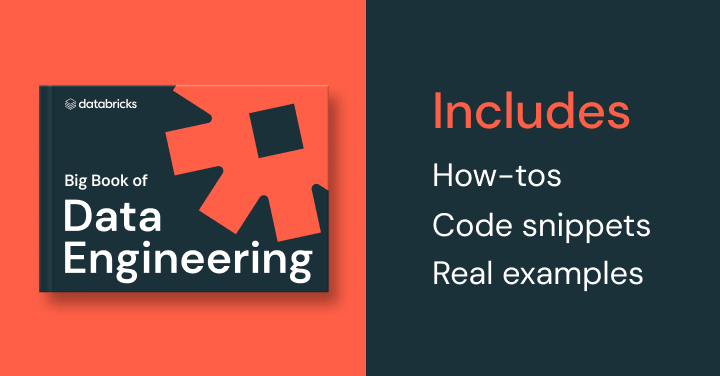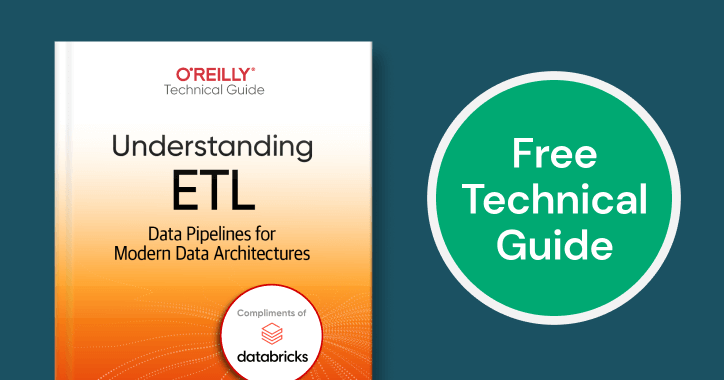ETL vs. ELT
Dive deeper into two data processing approaches

The choice of using ETL vs. ELT models for data processing pipelines requires a solid understanding of each.
Properly implemented, both approaches can help your organization achieve greater workflow efficiency; however, there are important distinctions between the two that merit in-depth investigation.
This article takes a deep dive into the similarities and differences between these two data processing approaches so that you can choose the best solution for your business.
ETL vs. ELT: An overview
The principal difference between ELT and ETL is in the order of operations. ETL stands for extract, transform, load, meaning that the process involves extracting data from its source first, followed by transformation into a usable format in a staging area, and finishing with the transfer of the usable data to a storage repository where it can be accessed for analysis.
This model has been a standard in data processing for some decades, while ELT is a newer processing option that takes advantage of modern data storage capabilities.
ELT stands for extract, load, transform, which means that data is loaded as soon as it is extracted, without being transformed first. It is then transformed into a usable format as needed, directly from the data repository.
ELT works well with modern data lake architectures, as these allow for the storage of both structured and unstructured data. This means that analysts can take advantage of a wider variety of data types to inform their insights, potentially leading to more-useful data interpretation.
Despite this, the ETL model still has a number of benefits, so it’s worth taking the time to understand all the similarities and differences between the ELT and ETL processing approaches.
Here’s more to explore
What are the similarities and differences between ETL and ELT?
While much of the discussion on this topic tends to focus on the difference between ELT and ETL, it’s important to remember that they do share some characteristics.
Identifying the similarities
-
Data management: The most important similarity is that both processes are ultimately geared toward the same goal: effective data management. Both ELT and ETL offer a systematic approach to ensuring your data is high-quality, consistent and accurate. Their primary objective is to make sure that your organization can gain actionable data insights.
From the point of view of the constituent processes, it’s also worth noting that the data transformation performed in each model is often similar, even if the context or order of completing the transformation differs.
-
Automation: A benefit that both ELT and ETL can offer is that they allow companies to automate the job of data integration. They can incorporate automatic scheduling and the resulting pipelines can be accessed via an API or command-line interface (CLI).
The major upside here is the potential for significant gains in efficiency and productivity, reducing the need for staff to spend large amounts of time on repetitive data tasks and freeing them up to focus on other work.
-
Data governance: In the modern business world, reliable data governance is essential. It’s not simply a question of efficiency — there are also the wider implications of brand reputation and legal compliance to consider.
Although the fundamental ETL vs. ELT differences imply slightly varying approaches to data governance, both models are more than capable of supporting strong policies.
These similarities shouldn’t be surprising. After all, they all reflect the main reasons for using an effective data processing model in the first place. When it comes to ETL and ELT differences, though, things get a little more complex.
How the differences can affect data processing
-
Availability: One crucial point to bear in mind when considering ETL is that you need to know in advance what you intend to do with your data. This is because the data needs to be transformed before it is loaded into the final repository. The answers to questions like “Which data will be required (and which will be discarded)?” or “How will the analysts use this data?” will determine how you treat and format your data during its processing.
In comparison, the ELT model allows you to store structured and unstructured data without having made transformation decisions, since that part of the operation takes place later.
This has quite significant implications for data availability. Analysts downstream in the ELT process can access any raw data that’s been stored at any time. This isn’t possible with ETL, which is necessarily a more rigid process that limits the amount of raw data that makes it through to the final storage area.
-
Flexibility: In fact, the issue of data availability is just one aspect of the more general one of flexibility. The fact that ETL is a linear process has quite a few advantages, but it does mean that it’s less flexible than ELT. Once a decision has been made about how to transform the data, it’s not really possible to change it. At least, not without making big modifications to other aspects of your system as a whole.
With ELT, you can use data in new ways whenever you want. The original data is always easy to find and can be transformed using a variety of methods depending on the analyst’s intended use case.
-
Accessibility: In some situations, you may not need to do very much to the data at all. If you simply want to deploy unstructured data in its original format such as, say, a video file, it’s a very simple matter to just access it and do whatever you want with it within the ELT model.
With a more traditional ETL model, data oversight usually falls within the purview of specialists in your IT department. They set the policies it works by and take care of all of the support.
This can be beneficial for maintaining consistent data standards, but it creates lower accessibility of data for the rest of your employees. This can sometimes lead to less efficiency in workflows.
-
Scalability: Another important ELT vs. ETL difference is the question of scalability. By its very nature, the ETL process is difficult to scale up fast. That’s because all the raw data you start with has to be transformed before the selection of data you decide to keep is stored in its final destination. This aspect of ETL is inevitably pretty resource-intensive.
On the other hand, the ELT model is much more easily adaptable. The fact that all the raw data is loaded into the central repository as soon as it’s extracted means you can essentially add as much data as you want without needing to process it in any way first.
ELT systems also tend to run on cloud-based platforms, which benefit from providing quick and straightforward scalability.
-
Speed: It can be tempting to assume that ELT models are simply always a fitter and more modern solution than ETL. But here’s the thing — there are specific aspects of data processing where the picture is much more nuanced. One of those is speed.
Fundamentally, you have a choice here. ETL is slower at the start because it involves transforming all the data before loading it into storage. But once that’s done, using the data is very quick and simple, because it’s ready for action as soon as an analyst needs it.
With ELT, you benefit from a very quick loading time because all you have to do is extract the data and move it to the repository. However, the stored data is much messier than with ETL. Once you actually want to use it, it takes longer to prepare the data according to your requirements.
-
Maintenance: When it comes to maintenance, the biggest factor is whether you use onsite servers or cloud-based ones. Obviously, if you have your own infrastructure, the burden of maintenance will be higher, as will the connected costs.
Older ETL solutions were run on physical infrastructure based onsite because it was the only option. Many still operate that way, but the advent of cloud-based solutions has opened up the possibility of an alternative.
This is the case regardless of whether you choose to use an ETL or ELT model. While it’s true that the additional secondary processing server used during the transformation stage of ETL adds complexity to maintenance requirements, that only really applies if you’re running the infrastructure yourself. If you use a cloud-based service, it will be handled by the provider.
-
Storage: It’s easy to see why taking advantage of the cloud to implement data processing is such an attractive prospect for so many organizations. While it’s certainly possible to use your own physical servers for storage purposes, it’s less realistic to do so if you want to use an ELT process.
The main reason is because of the inherent unpredictability in the resulting storage needs. ELT models go hand in hand with the modern data stack and work best with data lake–style architectures.
But storing all that raw data in multiple formats means it’s more difficult to know what your storage requirements will be at any given time. With ETL, you don’t need as much storage because you also have a clear knowledge of the selected subset of the original data that will be stored in the final repository.
-
Compliance: Today’s businesses operate in a complex world of rules and regulations. Keeping on top of compliance in areas such as data security is a critical consideration.
In this area, it would be fair to say that ETL can make your life easier compared to ELT. It’s certainly much more straightforward to ensure rigorous compliance standards when you transform all your data before you store it.
With ELT solutions, you have to store the data before you get an opportunity to remove sensitive information. If you're not careful, this can lead to problems remaining compliant with regulations such as HIPAA and GDPR, particularly within the context of storing data on cloud services whose servers are located across borders.
How to know when to use ETL vs. ELT
So, you may still be wondering: ETL vs. ELT — which is better? The truth is, it’s not possible to universally say that ELT is better than ETL or vice versa. The right choice will depend on several factors, with some examples including existing infrastructure as well as processing speed and compliance requirements.
Knowing when to use ELT vs. ETL comes down to understanding your business priorities. Here are some elements you might want to think about:
-
Data synchronization: If your business needs to combine data from a number of sources into a unified structured format, ETL is a good choice because you can make sure the data is treated before it’s stored.
-
Legacy upgrades: ETL can also be an excellent option if you have to migrate your data from legacy systems and need to make sure it’s consistent for your new system.
-
Compliance: As previously mentioned, the ETL model makes it much easier to standardize compliance with data privacy laws. So if your business operates in a field that processes particularly sensitive data, such as healthcare or finance, ETL may be the better choice.
-
Data volume: On the other hand, if your organization relies on regularly processing large volumes of data, such as customer transactions, ELT would probably be a good fit because of its flexibility.
-
Speed of access: Similarly, if your business model relies on processing data that is generated and used in real time, the lack of unnecessary delays in accessing data provided by ELT could be the deciding factor.
This ETL vs. ELT example list is a fairly simplified version of what’s possible, but it can hopefully serve as a useful jumping-off point. On the Databricks Platform, you can implement either ELT or ETL. It’s even possible to achieve hybrid options if you need a custom solution.
Using ETL vs. ELT tools with Databricks
If you would like to use an ETL solution, the Databricks Spark Declarative Pipelines product offers a number of advantages over ETL systems run on traditional data warehouse architecture.
Designed to support low-latency streaming ETL, it provides you with automated data flow orchestration, data quality checking, error handling and version control functionalities. While it provides smart default options, it can also be easily configured by your own Spark specialists.
Alternatively, the Lakeflow Jobs orchestration tool is a managed service that’s fully integrated with the Databricks Data Intelligence Platform. It’s a highly flexible solution that’s equally suitable for building ETL or ELT pipelines.
It puts you squarely in the driving seat as it allows you to define custom workflows in just a few clicks while offering unrivaled observability into active tasks. You will also benefit from top-tier monitoring tools, including instant failure notifications that allow you to address issues before they become a problem.
All of this is made possible thanks to the innovative Databricks Platform, which has transformed the data engineering concept. Built on lakehouse architecture that combines the best elements of data lakes and data warehouses, it offers a cost-effective way to banish data silos for good and help your business use data to deliver the top-quality service your clients deserve.


